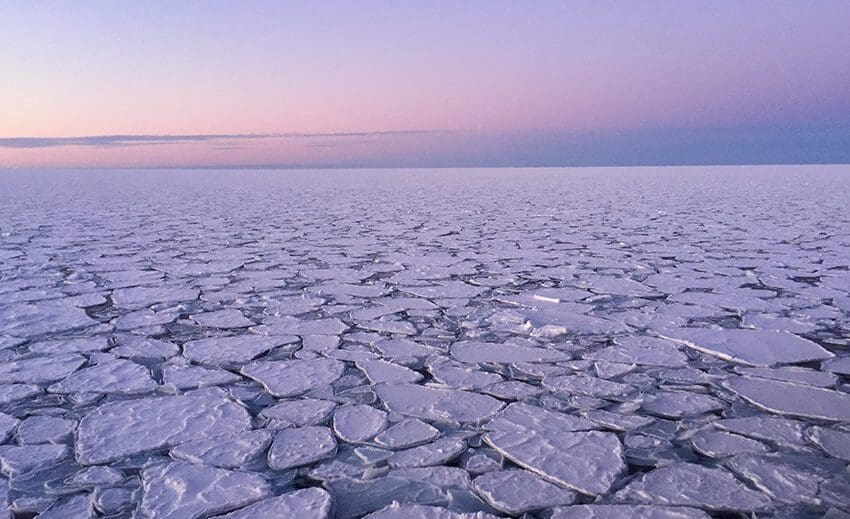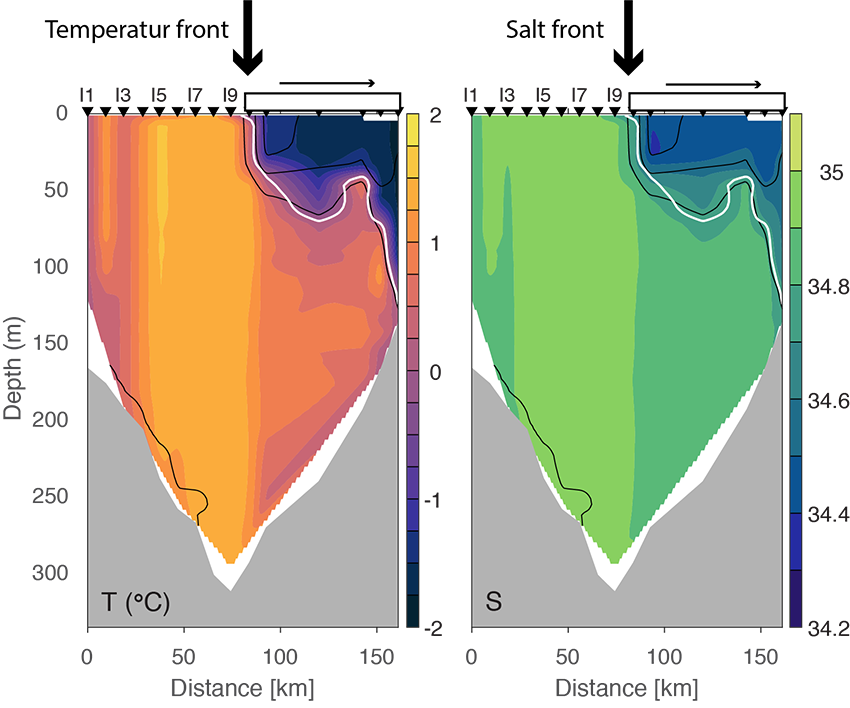The perfect front

Pancake ice in the Barents Sea in February 2021. Photo: Frank Nilsen/UNIS.
After almost a week on the Nansen Legacy winter process cruise, we now sail into the sea ice and stay there until we go south to Tromsø towards the end of February. A couple of days ago we saw the sun just above the horizon, and for us living in Longyearbyen it was a great moment of joy, having been four months without the sun!
15 February 2021
Text: Frank Nilsen, Professor Physical Oceanography
The first six working days on board R/V Kronprins Haakon have mostly taken place at open sea. We have collected and launched advanced ocean gliders. These can dive 1000 meters deep in predetermined patterns to measure, among other things, temperature and salt levels over several months. We have also cut through the ice belt that stretches from Hopen and up to Bjørnøya, to reach 34 degrees east where we are on the lookout for the Polar Front. The Polar Front is a sharp distinction between warmer and saltier Atlantic waters in the south and colder and fresher Arctic waters in the north (Figure 1).

Several weeks of cold winds from the north and east ahead of the winter process cruise have led to the sea ice establishing itself quite normally in our research area; south in the northwestern part of the Barents Sea. When the ice spreads south, the cold Arctic water “follows” and settles over the warm Atlantic water as a protective layer for the sea ice. The Polar Front is often found along the ice edge as a clear difference in temperature and salt, marked with vertical arrows in Figure 1.
Try to imagine that the sea ice floats on the cold water until where the arrow points (white flakes in Figure 1). It was this Polar Front we had planned to cross with our advanced underwater robot (the AUV Harald from NTNU), back and forth at different depths, but unfortunately the underwater robot cannot operate under sea ice.
Just a few days before we planned to launch the underwater robot we had a stroke of luck. The wind turned to the south and packed the sea ice northwards. The sea ice disappeared, the ocean opened (horizontal arrows in Figure 1), and the conditions were perfect for our winter process investigations. We have already managed to collect good and important data in and around the Polar Front.
How it went with the very exciting AUV operation, you can soon read in a sequel.